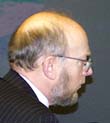RF Cascade Workbook for Excel
RF & Electronics Symbols for Visio
RF & Electronics Symbols for Office
RF & Electronics Stencils for Visio
RF Workbench
T-Shirts, Mugs, Cups, Ball Caps, Mouse Pads
Espresso Engineering Workbook™
Smith Chart™ for Excel
|
|
Measurement of cable impedance - RF Cafe Forums
|
| mbergmann
|
|
Post subject: Measurement of cable impedance
Posted: Mon Jan 15, 2007 6:23 am
|
|
Joined: Mon Jun 19, 2006
10:27 am
Posts: 13 |
|
Hello,
characteristic impedance of a finite
length of line at a given frequency can be derived
by taking two impedance measurements, one with the
end open circuit and the other with the end short
circuited. From these, Zo is calculated as follows:
Z_0 = SQRT ( Z_short * Z_open )
Anyone
knows how to derive this equation ?
|
|
| |
|
 |
|
nubbage |
|
Post subject: Measurement of Cable Impedance
Posted: Tue Jan 16, 2007 7:10 am
|
|
| |
| General |
 |
Joined: Fri Feb 17, 2006
12:07 pm
Posts: 268
Location: London UK
|
Most standard textbooks on line transmission cover
this. It is derived from the T equivalent circuit
of the transmission line, having total series impedance
of Z1 and shunt impedance z2, correctly terminated
in Z0. Looking from the left end as the input
with the right end short circuited, the input impedance
is Zsc = Z1/2 + Z1*Z2/(Z1 + 2*Z2) .............1
Open circuited, the input impedance at left
is Zoc = Z1/2 + Z2 ......................................2
The Characteristic Impedance is given by
Z0 = SQRT( Z1*Z2 + Z1^2/4) ..................3
which needs a separate proof. If equations
1 and 2 are multiplied together you get Zoc
* Zsc = Z1^2/4 + Z1 * Z2 = Z0^2 Thus Z0 =
SQRT (Zsc * Zoc) My textbook is an ancient
Everitt "Communication Engineering" written with
a quill pen on parchment.

|
|
| |
|
 |
|
wb9jtk |
|
Post subject:
Posted: Tue Jan 30, 2007 12:57 pm
|
|
| |
| Colonel |
 |
Joined: Tue Dec 26, 2006
5:39 pm
Posts: 25 |
|
Here is a quick way to test.
Connect to your
network analyzer or impedance meter. Find the frequency
at which the cable is 1/4 or 1/2 wavelength. Then
adjust your network analyzer or impedance meter
to a frequency so that your cable is 1/8 wavelength.
Note the reactance when you short or open
the far end will be equal and opposite. The magnitude
of reactance you measure equals the characteristic
impedance. Example, you measure 0.5 +j42 and 0.5
-j42 you now know that the cable Zo is 42.
On a vector network analyzer you can do this
really quickly without need to KNOW your frequency.
Set the analyzer to 0 Hz sweep and polar display.
Keep alternating between shorted and open at the
far end and watch the display. Vary the frequency
until you see that the capacitive reactance is the
same as the inductive reactance (the 'dots' on the
CRT will be exactly vertically aligned) as you switch
from short to open. Then read the reactance and
you have the answer.
For example I have
found rolls of RG58 as low as 42 ohm and as high
as 62 ohm. It is a lesson to never pay attention
to "RG" numbers ever again.
|
|
| |
|
 |
|
mbergmann |
|
Post subject:
Posted: Fri Mar 09, 2007 5:34 am
|
|
Joined: Mon Jun 19, 2006
10:27 am
Posts: 13 |
|
thank you nubbage and wb9jtk !
|
|
Posted 11/12/2012
|
|

Copyright: 1996 - 2024
Webmaster:
Kirt
Blattenberger,
BSEE - KB3UON
RF Cafe began life in 1996 as "RF Tools" in an AOL screen name web space totaling
2 MB. Its primary purpose was to provide me with ready access to commonly needed
formulas and reference material while performing my work as an RF system and circuit
design engineer. The World Wide Web (Internet) was largely an unknown entity at
the time and bandwidth was a scarce commodity. Dial-up modems blazed along at 14.4 kbps
while tying up your telephone line, and a nice lady's voice announced "You've Got
Mail" when a new message arrived...
|
All trademarks, copyrights, patents, and other rights of ownership to images
and text used on the RF Cafe website are hereby acknowledged.
|
|
All trademarks, copyrights, patents, and other rights of ownership to images
and text used on the RF Cafe website are hereby acknowledged.
My Hobby Website: AirplanesAndRockets.com
My Daughter's Website: EquineKingdom
|
|
|
|




